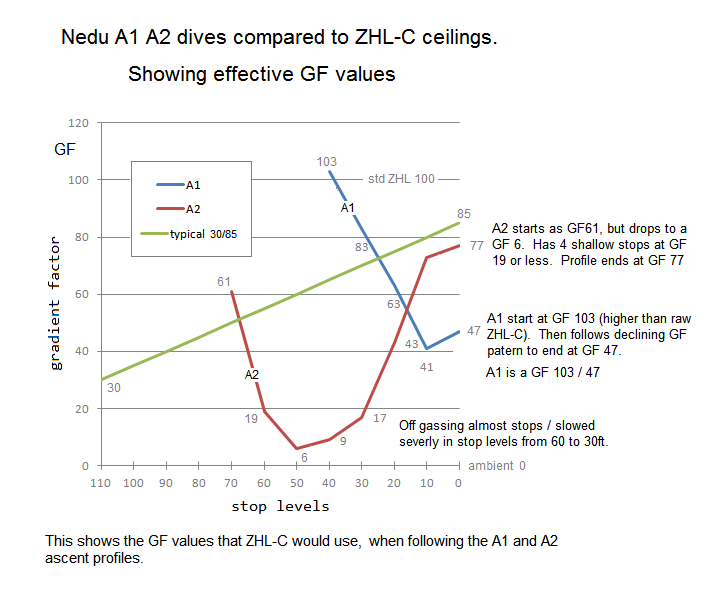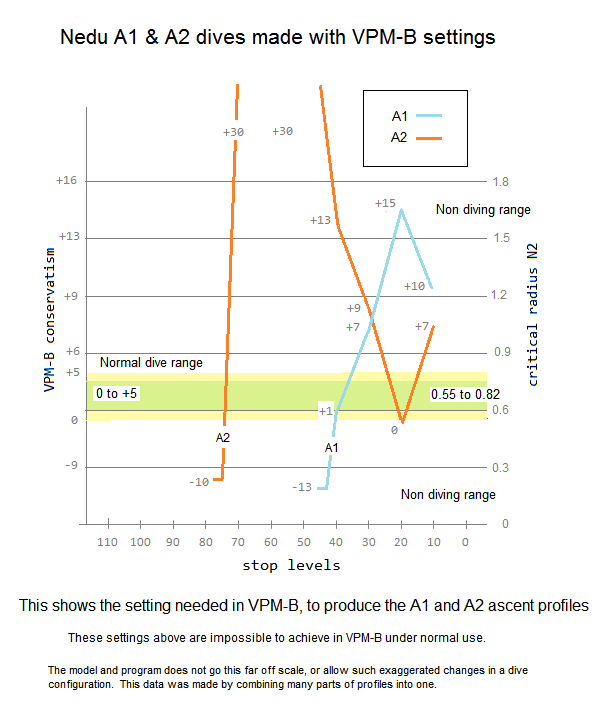Kevrumbo
Banned
- Messages
- 5,659
- Reaction score
- 1,368
- # of dives
- 1000 - 2499
Yes, that argument & criticism of the experimental paradigm was all covered previously in this thread. But the more compelling interpretation by UWsorjourner (and Simon Mitchell's lectures on the NEDU Study during the 2013 Bikini Expedition), had to do with the Integral of Supersaturation Concept:I was a little to hasty with my reply above. After re-reading the study and thinking about it for awhile I still come to the same conclusion that the study was flawed but now don't believe the NEDU was being careful for reasons explained below.
I've been in the automation/control business for almost 40 years and one of the cardinal rules I try to follow is you only change one thing at a time. If you change item 1 and item 2 and there is a problem was it due to item 1, item 2, or some combination of the two items. There are too many variable factors in the study to reach a conclusion especially when one of the factors directly influences DCS namely the TST or total stop time. The researchers in taking the variability out of TST created a variability in the amount of off-gassing by introducing deep stops. They write: "This is the largest man-trial of individual decompression schedules of which we are aware and the only laboratory comparison of deep stops and shallow stops that is not confounded by differences in TST."
You try to reduce the variables as much as possible other than the variable you are trying to study (deep stops in this study). The variables in the study are: pre-dive factors, different algorithms (WAL-18 Thalmann and BVM(3)), and amount of off-gassing between the first stop and the surface. The pre-dive factors included sleep, alcohol, caffeine, exercise, illness, and medications. The pre-dive factors were not controlled but information about them was obtained by self-reporting through brief interviews.
There's too much variability. The results to me are inconclusive; Was DCS due to the deep stop or was it due to shortening the TST in spite of what a deep stop algorithm computed (or would have computed)? Here's what I would have done:
Control the pre-dive factors: no alcohol or caffeine, everyone gets full night sleep (no alarm clocks), everyone eats the same number of meals before the test (no snacks), no one taking medications, no illnesses, same amount of exercise for everyone. Use the same algorithm -- Buhlmann with GF's. For the deep stop divers, use 30/90 or 30/85. For the shallow stop divers, use 90/90 or 85/85. By using a GF(Lo) a deep stop can be introduced while maintaining the same GF(Hi) limit. This will increase the length of the shallow stops but maintain the same end point for final tissue content on surfacing. Every diver needs to dive in both groups.
A couple of good questions at this point might be:
1) what is integral supersaturation? and
2) why does Ross seem desperate to discredit integral supersaturation [with regards to VPM]?
What is integral supersaturation (ISS)?
Integral supersaturation is a pretty simple concept. Decompression sickness occurs due to the release of dissolved gases after a dive. How many bubbles will form and how big they get is a function of 1) the speed of the release (that's the pressure of the gases being released), and 2) the time those pressures are allowed to exist. Higher pressures can be endured for a short time and lower pressures for a longer time. The thing to remember is that the TIME you're exposed to supersaturation is important.
ISS is a measure of the speed and time of decompression. Simply looking at charts of peak supersaturation gives you an idea of speed, but is not a good measure of the overall supersaturation-time you're exposed to. Integral supersaturation measures both pressure and exposure time and so can be thought of as an index of decompression stress (supersaturation pressures you're exposed to and the time you're exposed to them) when comparing dives with a similar run time. Pretty simple idea. Its not the rosetta stone of decompression, but it is an interesting and useful measure as Dr. Doolette has described.
Consider the chart below. The chart shows ISS for the dives in the NEDU study with VPM-B+7 and GF 53/53 added. The VPM and GF parameters were chosen to get to the same runtime as the NEDU A1 & A2 profiles.
As noted numerous places by Doolette and others, the only credible explanation for the A1 profile performing so much better than the A2 profile is that the ISS of A1 was significantly lower. As Dr. Mitchell addressed here, even though A1 had much higher early supersaturations, those supersaturations were short in duration. What seems to have been much more significant is that A2 had about 50% more supersaturation-time exposure once the diver surfaced.
Now compare VPM and GF on the chart. It's pretty obvious that VPM and A2 (the higher risk profile) are closer; GF and A1 (the lower risk profile) are closer together. And that pattern of significantly more supersaturation exposure upon surfacing doesn't end with the NEDU study. . .
So. . . ISS seems to indicate VPM (and other bubble models) behave more similarly to the A2 profile shown to be more risky in a very closely monitored study of actual dives performed by the US Navy. Its that simple. For some other similarities see here. . .
Deep Stops Increases DCS
Last edited:







